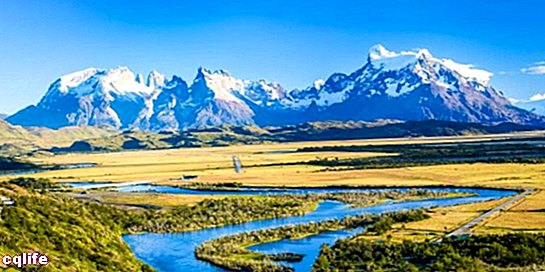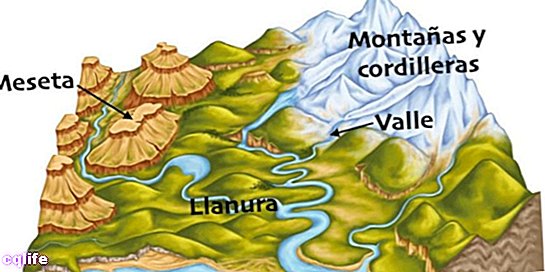- What is the continental relief?
- Characteristics of the continental relief
- Forms of continental relief
- Ocean relief
We explain what the continental relief is, its characteristics and what its forms are like. Also what is the oceanic relief.

What is the continental relief?
In geography, we speak of continental relief or emerged relief to refer to the different forms that the lithosphere terrestrial on its surface, as long as it is not covered by the oceans. In this it is distinguished from the oceanic relief, and together they constitute the relief terrestrial, that is, the relief of our planet.
As its name suggests, the continental relief is typical of the platforms emerged from the earth's surface, that is, of the continents. This type of relief also includes the surface of the islands, since they protrude from the water, and in total it is estimated that it covers 30% of the total surface of our planet.
Given that the Earth crust that is submerged and that is exposed to the air they are subjected to different physical and erosive processes, it is logical that they present very different characteristics and that they be studied separately.
However, in both cases the land relief is subjected to long-standing geological forces, which as the centuries go by modifying the relief and transforming the surface of the planet, along what is known as the cycle geological.
Characteristics of the continental relief
In general, the continental relief is characterized by the following:
- As we have said, it is characteristic of the emerged portion of the lithosphere, that is, it is distinguished from the oceanic or submerged relief.
- It presents enormous irregularities as a consequence of the action erosive and sedimentary from wind, rain and rivers, and also of tectonic movements over time.
- For the same reasons, it is always a changing relief, albeit at such a slow pace that Humans we can hardly perceive it.
Forms of continental relief

The continental relief is extremely varied, and its different forms are produced as a consequence of numerous geological and erosive forces over millions of years. Said forms are the following:
- Moutains, saws Y mountain ranges. These are natural elevations of the scenery, formed by the folding of the lithosphere due to the tension between two tectonic plates confronted. They reach heights of more than 600 meters and tend to have pointed shapes, with many peaks, when it comes to young mountains; while the old mountains have rounded tops due to the erosive action of the elements. When they occur in large numbers, they can be called sierras (groups of regular mountains), cordilleras (groups of high mountains) or mountain systems (groups of sierras or mountain ranges). When it comes to smaller elevations, we can speak more of hills or hills. Examples of mountains are the Urals, the Pyrenees and the famous Aconcagua.
- Valleys. Valleys are depressions or low parts that are formed between mountains or ranges that are close to each other, and consist of plains of different sizes, very often crossed by rivers that descend from the mountain. Valleys are usually “U” or “V” shaped, depending on whether they were formed by glacial erosion or river erosion, respectively. Examples of this relief are the Valley of Caracas, where the Venezuelan capital was built, or the Valley of the Moon, in the desert of Atacama, in Chile.
- Plateaus. Also called plateaus, they are elevations between 600 and 5000 meters high, on whose peaks there is a plain or plain. They originate as a consequence of the particular erosion of the mountains, and they usually have deep hills on their sides. Examples of plateaus are the Andean Altiplano, where the Quebrada de Humahuaca is found in northern Argentina, or the Tíbet plateau, whose average altitude is around 4,500 meters and has a vast surface area of 2.5 million km2.
- Plains or plains. As its name indicates, these are long extensions of flat or almost flat land, generally located at or a few meters above sea level. They can present gentle elevations - hills or hills - or consist of vast plains such as the North American Great Plains, located in the US states of New Mexico, Texas, Oklahoma, Wyoming, Montana, South Dakota and North Dakota.
- Absolute depressions. They are called this way to the falls of the ground below the sea level, that is to say, to the deep depressions of the surface that can occur as a consequence of erosive processes or in craters formed by the impact of meteors, for example.
Ocean relief
It is known as oceanic relief or submerged to the bottom of the oceans, that is, to the forms that the terrestrial surface acquires under the different layers of water that make up the seas and oceans. This relief is significantly different from the emerged one, since it is subjected to the enormous submarine pressures and to totally different forms of wear.
